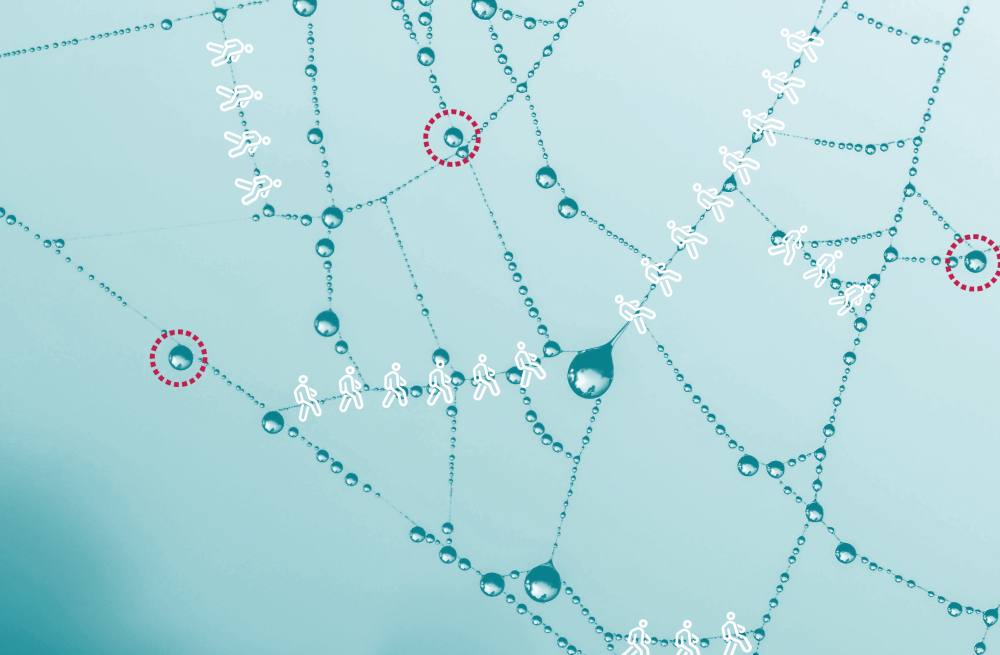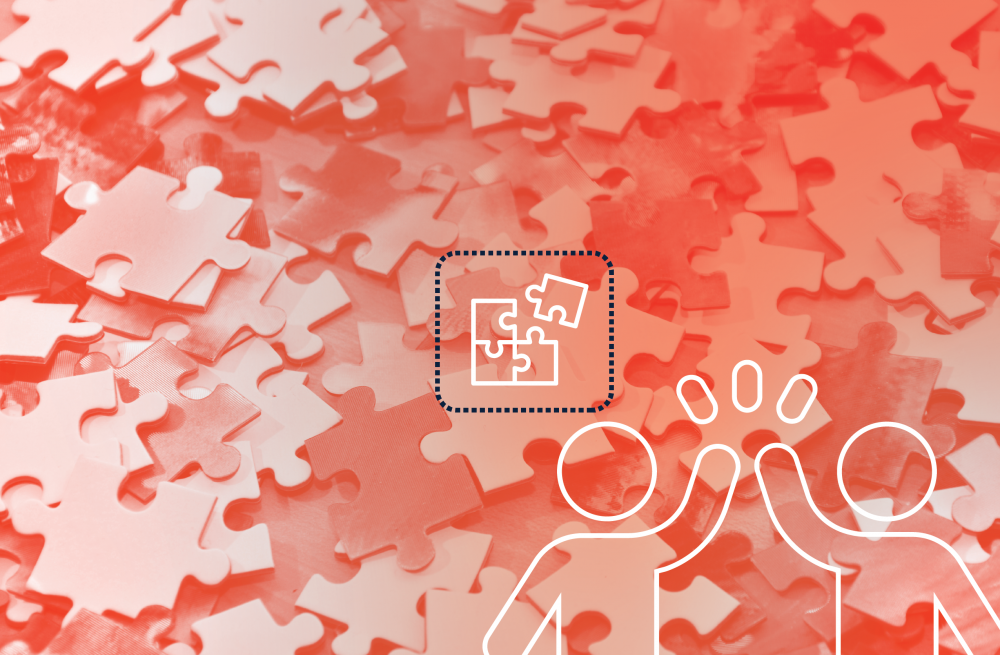“In order to ensure progress and resilience moving forward, we must emphasize that disruption can be a powerful force for change.”

The disruption caused by COVID has had a profound impact on workplace. In a few short months, there have been major changes in where and how many people work. The mass transition to telework has been challenging for many, but the impulse to go back to “normal” should be questioned. We should first reconnect with the purpose of the workplace: to connect and support people in collaborative work.
Before reentering the physical office, it’s necessary to think through the benefits of doing so in the context of the COVID moment. Returning to a socially-distant workplace may not measurably improve employee experience, collaboration or performance over continuing to telework. The measures necessary to limit viral transmission could hurt company culture or intrude upon employee privacy.
We have just witnessed the sudden emergence of something that looks much more like the future of work most of us imagined. Previously, large-scale telework was challenging for some employers to accept. Some feared a drop in employee efficacy or an important means of supporting the culture and brand of an organization. Being “open-for-business” suddenly means being fully distributed, and it is now clear that many more people could have been teleworking than did—they are doing it right now. Teams worldwide are learning how a distributed workforce can maintain or even improve culture, community, health, and organizational performance.
Below, we explore three key questions about the current telework moment:
- How can technology support workplaces that are both safe and high-performance?
- Will this shift last, and should we want it to?
- What can we learn about navigating disruption and change?
Technology in Service of Health

Visit any grocery store to see proof that attempts to change user behavior are usually only partially successful. For example, directing people with signage and requiring six feet of clearance can create unanticipated congestion or confusion, causing people to ignore the posted signs and use their best judgement to maintain social distancing.
Technology can fill an important complementary role. However, there is a gap between what we can do and what we should do. The need to limit viral spread will persist for some time—long enough for new technology to become available. Over the next 6-12 months, expect an explosion in products and tools intended to support these efforts, including fine-tuning of AI and machine learning-based approaches.
Contact Tracing and AI Platforms
When paired with widely-available cameras and sensors, AI can create a virtual detection mesh around and throughout a workplace. By merging building and user location data, such systems can enable building-wide contact tracing while also measuring the impact of social distancing measures. While the effectiveness of such systems in protecting wellness is not yet clear, there will likely be much more data available soon. Until now, due to a lack of interoperability standards and low demand, most of these integrated deployments have been unique and proprietary. Expect that to change as early adopters drive standardization and demonstrate long-term benefits.
At this time, we recommend that businesses make use of contact tracing platforms which are under development at the state or federal level rather than deploying their own. In addition to easing adoption, this will also alleviate some user privacy concerns that might cause people to choose out-of-office work to avoid being tracked by an employer.
It should be noted that contract tracing is not a complete solution. It can only capture a slice of user activity retroactively. As a result, it will be most effective when paired with programs that encourage self-assessment outside of the workplace and offer increased sick time so that people can choose to self-isolate when they suspect they may be ill.
Inform vs Enforce with Workplace Management Systems
Location data is another powerful tool. However, attempting to influence user behavior with location tracking technologies may have negative consequences. Users may be stigmatized as safety risks. We recommend tracking space usage instead of staff location or safety compliance (face mask detection, etc.); this is also more easily accomplished using existing building systems..
Working in shifts may allow for reductions in occupancy. However, it may require moving to unassigned desking so that teams can spread out as needed. This, in turn, requires an investment in booking systems to manage the dynamic assignment of seating. Look for platforms that have the ability to incorporate distancing into allocations and that combine space management with team management. For example, room scheduling platform Robin has repurposed its interactive office map platform to include social distancing, and it also offers the ability to maintain.
In a workplace focused on distance and not capacity, expect users to make last minute changes. Spaces may be unoccupied but booked, or vice versa. Because of this, user booking information should not be considered a reliable means by which to create cleaning schedules or map occupancy hot-spots. Instead, consider using occupancy information already provided by most modern lighting platforms, which provide a more reliable indicator of occupancy.
Look to your existing platforms and providers for solutions that leverage systems already in place. For example, consider repurposing room scheduling occupancy indicators to indicate if cleaning has been completed since last use. By leveraging the RFID reader built into many room scheduling panels, cleaning crews would be able to reset room “clean” status as they go.
Change That’s Made to Stick

Over the past few months, employers have made substantial efforts to ensure that their people have the equipment, connectivity and support required to work efficiently while out of the office. Even though it has the potential to deliver a better experience to many employees, it is not a given that this shift will last. Without sustained investment in capabilities and ongoing support, people may instead go back to the pre-COVID status quo.
Employers need to determine what resources should be offered to those who are teleworking.. Employee surveys and performance metrics can help to identify tools and technology that may be needed, and can provide ongoing feedback on their efficiency and effectiveness post-adoption.
New training and on-boarding resources will probably be needed, and there should be special attention given to health and security. A newly-distributed workforce is uniquely vulnerable to phishing and other malicious digital activity. Best practices around information security should be shared frequently. In support of employee heath, it’s important to encourage movement throughout the day and breaks from screen time, which will help reduce the potential for long-term negative impacts.
Employers must eliminate the bias against telework that has existed to this point. Previously, those who were not physically present might miss out on important conversations or opportunities. Over the long term, the consequences of this disconnect can be significant for the individual and the organization. Around this, we are hopeful; as a larger proportion of a company’s people choose to telework, there is a natural incentive to invest in making it as effective as colocated work. The companies that navigate this transition effectively will be those who are learning how to transmit culture and social connection digitally, and who give distributed workers a level of power and connection comparable to their in-office colleagues.
A question of equity arises around who should come to the office. COVID poses a disproportionate risk to certain populations, and employers must address how and when at-risk individuals might need to come in. Changes in operations and support may be necessary to “level the playing field” and avoid placing at-risk populations in harm’s way. For instance, vulnerable employees could return simultaneously while remaining isolated from teams with which they may not need to interact.
Isolating individuals within the physical workplace may undermine the value of colocation. If individual desks are fully isolated, it may be difficult for people to collaborate in the usual ways. Generally, allocating spaces based on teams and taking the necessary steps to ensure a cleaner environment will result in more safety overall; but we must recognize that users can become upset if restrictions are to be placed on their time, amenity usage and work areas. These changes must be handled with care.
Disruption as Change Agent

This moment has ignited the most successful technology adoption program in the history of the modern workplace. After years of advocating for the adoption of collaboration technology and measuring the results in percentage point increases over time, we saw a dramatic shift in adoption—essentially overnight—that can offer some lessons about future change efforts.
Systems influenced internally do not react as swiftly (or completely) as they do when challenged by external forces. When organized against a common organizational threat, users develop a group empathy that focuses on overcoming challenges together.
Technology adoption is more cohesive when technology is the solution to the change and not the change itself. Often, technology initiatives are presented to users as a beneficial change to an existing process instead of the answer to a problem. This change format lacks urgency, and the negative impacts to the user are attributed to the technology itself and not the business driver.
We need not wait for an event of this magnitude each time we want to push for major organizational change. We can use these lessons to build a new framework for change, provided we acknowledge the following:
- Real change carries risk of failure.
- Disruption must be inevitable and unstoppable; attempting to shake things up with artificial controls or limits will keep change efforts at the individual level and not create the necessary group dynamic.
- Change may not go as envisioned. Avoid over-controlling the response. As members of the organization determine what they value—which is a critical part of disruption-fueled change—the effort must be responsive.
- Disruption can’t be localized; it must be system-wide. For disruption to create lasting change, it has to impact all facets of business and be complete enough to wipe away existing structures, at least temporarily.
We have now seen that structural and policy barriers to change can be removed with the right motivation. The COVID moment has called into question the assumption that work must be done in the office. More of our shared assumptions about the conditions required for effective work must now be tested.
Disruption Fosters Triage
There is no better time for a rethink of organizational priorities. Disruption can be a powerful change agent when it rallies a workforce to respond to challenges. This can drive the evolution of both technology and organizations. When teams change in response to challenging times, they must examine their values. The result of this process is value-driven innovation.
From opportunities to embrace new technologies in support of workplace security to renewed emphasis on wellness and comfort to a global rethink of where work can be performed, it is clear that the impact of this crisis does offer some silver linings. In order to ensure progress and resilience moving forward, we must emphasize that disruption can be a powerful force for change.

